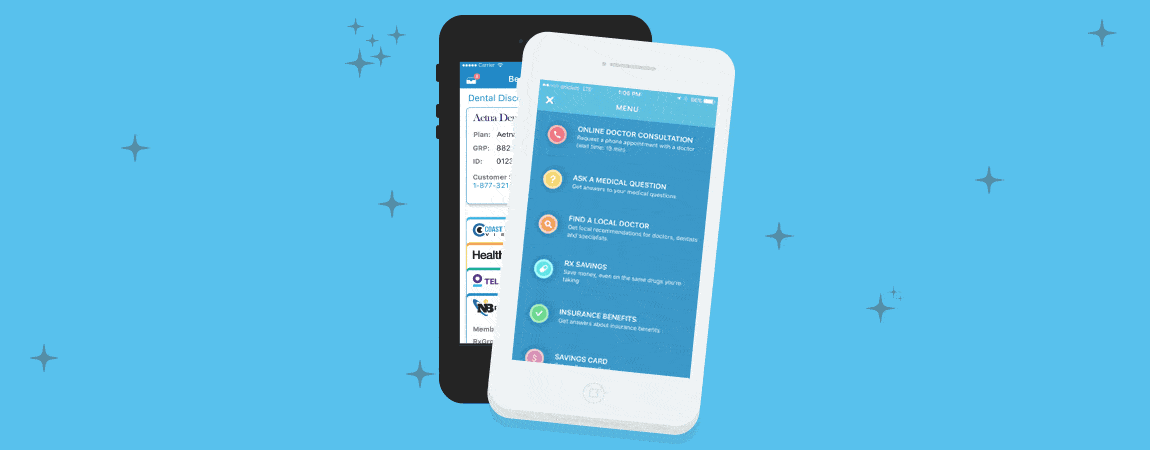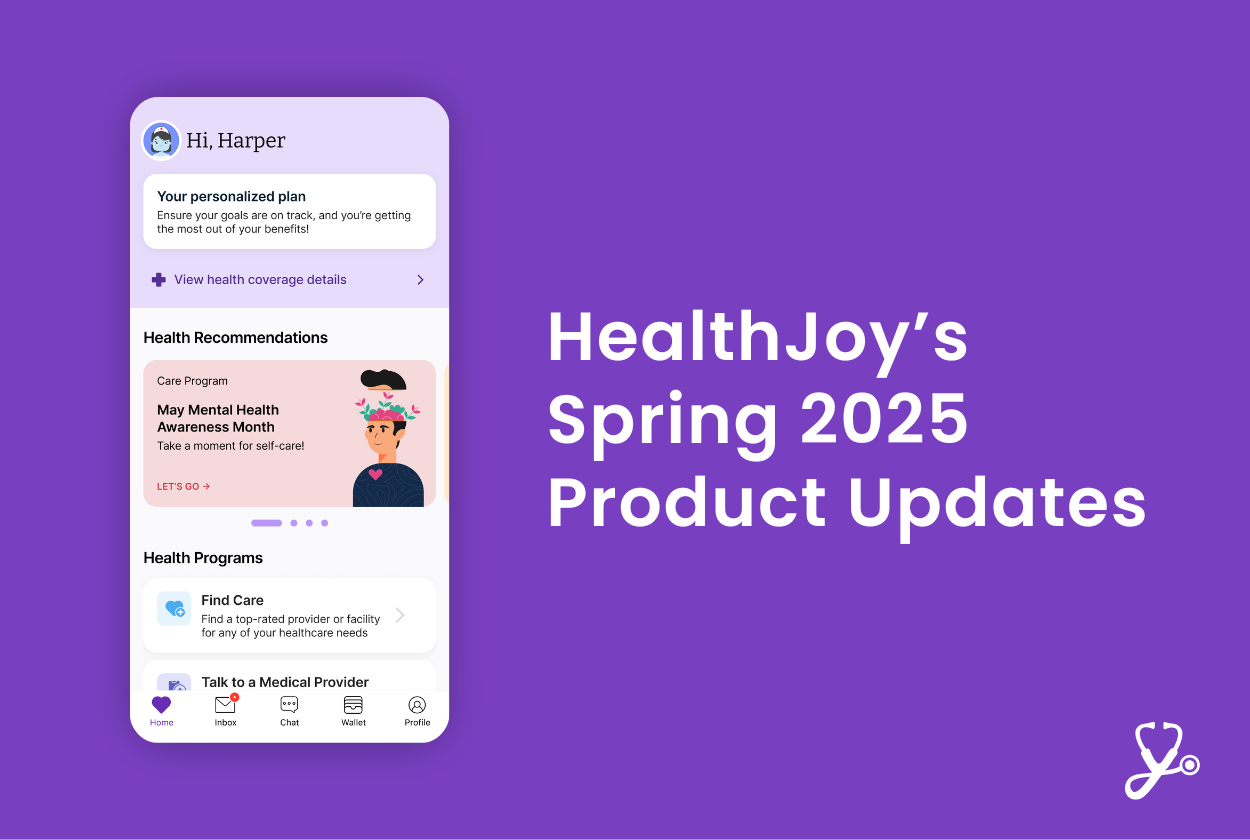HealthJoy for Groups Released to Tackle Employer Healthcare Increases
Today we are pleased to announce the launch of HealthJoy for Groups, an app that helps businesses control their healthcare expenses by...
Connected Navigation Platform
Guiding to high-value care
Behavioral Health
Foster a mentally healthy workplace
EAP
Supporting holistic wellbeing
Virtual MSK Care
Reimagining musculoskeletal care
Virtual Primary Care
Powered by smart navigation
Surgery Centers of Excellence
Best-in-class surgical outcomes
Virtual Urgent Care
Immediate care, any hour of the day
Chronic Care
A new approach to chronic care
Integrations
Flexible to any strategy
4 min read
 Rick Ramos
:
January 10, 2022
Rick Ramos
:
January 10, 2022

You’re about to launch an exciting new benefit, and everything’s in place to guarantee it’s a smash hit — everything, that is, except your employees.As an HR professional, launching a new program feels like a complicated juggling act. It’s likely you’re facing budgetary concerns, workplace culture questions, and questions about buy-in from upper-level management, not to mention your already long list of existing tasks. Once the program is finally ready to launch, it’s tempting to breathe a sigh of relief, sit back, and watch the program work its magic. However, long-term program success doesn’t happen with the flip of a switch. For any new HR initiative to make a real difference, employees need to use it.
No matter how fired up you may be about the value it adds, it’s crucial that your employees feel the same way. Here are four essential steps to boosting employee utilization when launching a new HR program.
Clear communication to employees is the foundation to any successful rollout. During a new program launch, your HR department should proactively communicate with and rally employees at three key touchpoints:
Before the rollout, start generating buzz for the program internally. Send out an email or a text message giving sneak peeks that highlight some of the coolest features of the program. It may also be helpful to reach out to the program vendor to get tips on how to build excitement for the launch based on past rollout experiences at other companies (see our post How to Simplify Benefits Communication for Open Enrollment for more).
The rollout period should be informative and appropriate. Don’t assume bigger is better. Depending on your organization, small group meetings in-person or via Zoom might be more appealing to employees than bigger lecture-style presentations.
After launch, continual communication is essential to integrate a new program permanently into your company culture. Make sure to maintain follow-up communication in a frequent yet focused manner, so employees aren’t overburdened with information. It’s important to repeat, repeat, repeat. Even if employees don’t hear you the first time, they’ll remember where to go when it matters.
When communicating with employees, consider the “rule of seven” from marketing. This rule says a person needs to hear or see a message over seven times before it enters their consciousness. You can’t expect to fire off a single email and have it work for you. It’s always better to over communicate in the channels employees already use and love. It’s also important to leverage your workforce’s preferred communication channels. In our 2021 Employee Benefits Insights survey, 28% of respondents ranked an app as their top preferred way to receive benefits communications; 23% ranked email as their No. 1 preferred source.
Once employees are aware that the program exists, they need to know how to use it. Employees might need additional education outside of open enrollment, especially if there’s new tech involved. While it may be easier to put employee education on autopilot, any effort will be more rewarding if it’s well-suited to your organization’s culture. Think outside the box — innovation has the power to influence engagement. Instead of sending emails people might not read, a brief, monthly video call could provide a more effective setting for coaching employees.
Education helps employees understand the true value of the benefits they are receiving. Once they know exactly what they have and how it works, they’ll realize its worth, boosting engagement and utilization rates naturally.
Telemedicine use is growing at an exponential rate. In this guide, we’ll share our best tips on how to make this underutilized benefit work better for your company.
Sometimes people will only listen to you if you know what it’s like to be in their shoes. Personalization plays a key role in getting people’s attention, establishing credibility, and building trust. With any new program or initiative, understanding someone’s needs and sharing relatable examples of employee success is invaluable.
One great way to go about this is to appoint an internal champion who’s devoted to the program and truly believes in its value. When a single person, especially in a leadership role, is passionate about a program, they have the potential to inspire others to jump on the bandwagon.
Take a story we heard from one woman who saved her husband’s life using the HealthJoy app. Her husband never saw a doctor and doesn’t use medical care. One day, they were driving home from vacation when the husband said he wasn’t feeling well. The woman insisted they needed to go to a hospital, but her husband refused, saying he just needed to lie down. The woman said, “I have this app on my phone. We can talk to a doctor in 10 minutes, and if they say you need to go to the hospital then we are going. Deal?” He agreed, and they used the app to do a telemedicine consult. The doctor said he needed to go to the hospital — he was having a heart attack. When they arrived, they told them if they had delayed going to the hospital, he might’ve died.
Sharing this type of success story, especially when it comes from employees themselves, is one of the most effective ways to show your employees a program’s value. Don’t be afraid to champion an employee and let them lead from within. Their genuine support for the program may be enough to convince the entire workforce.
Employees often need an extra push to engage with new HR initiatives, and incentives, such as financial rewards, are an opportunity for your HR team to motivate new and existing talent. Depending on your program, different approaches could lead to equally fruitful employee participation.
Sometimes small, lottery-style incentives work best. By giving people the opportunity to win (rather than a guaranteed reward), you can create strong motivation without producing entitlement. These incentives can take the form of raffles for gift cards, prizes, tickets to events, and more. Other times, more significant incentives are necessary when the behavior is hard to achieve or if the reward to the company is greater than the individual reward. For example, having an employee go to a local MRI provider (whose fee is $500) instead of going to a hospital for the same procedure (where the fee might total $1,000) might require a more significant incentive, but the payoff is also greater.
To drive utilization, employers need to choose the right incentives. In other words, the target behaviors being rewarded must drive employees to engage with the program and experience its benefits firsthand. For instance, the incentive for a 100-day step challenge should go to those who meet their weekly step goal, not just those who sign up for the program.
Lastly, make sure that employees are aware of the full value of the financial benefits they can receive by participating. Healthcare and benefits are complicated, and employees may not always understand what they’re getting in return for their time.
Launching a new initiative is stressful and tedious, so you need to guarantee that your HR department’s diligent efforts pay off in the form of high participation rates. From employee benefits to compensation and performance management, high employee utilization is key to the successful launch of any new HR initiative. By following these steps, you can optimize the employee experience, and ensure the investment of your time is well worth it.
This post was originally published in August 2018. It was updated in January 2022.

Today we are pleased to announce the launch of HealthJoy for Groups, an app that helps businesses control their healthcare expenses by...

During the pandemic, we heard a lot about the harmful effects of delayed care. Employees who were afraid to see their doctors in person skipped...

2025 is off to an incredible start at HealthJoy, with a series of exciting product updates that are already making an impact!